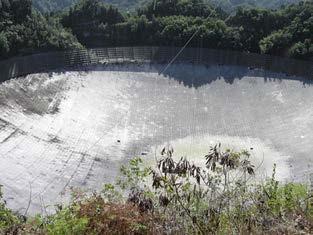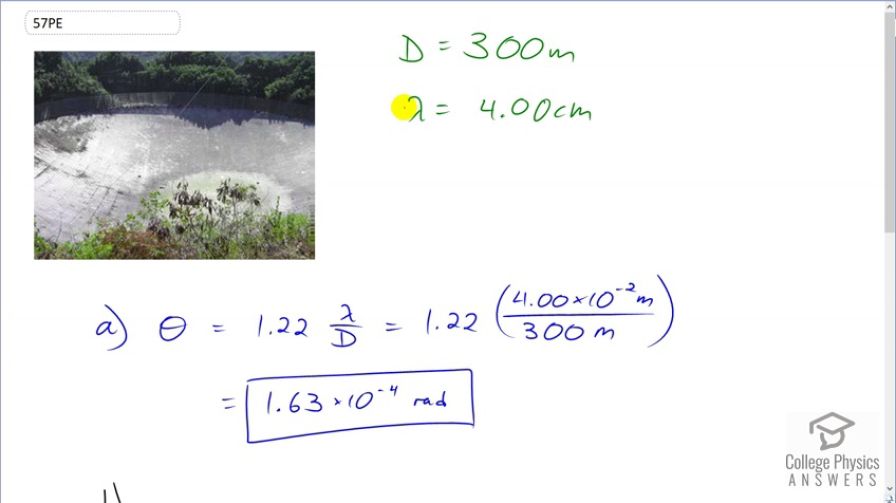Question
The 300-m-diameter Arecibo radio telescope pictured in Figure 27.28 detects radio waves with a 4.00 cm average wavelength. (a) What is the angle between two just-resolvable point sources for this telescope? (b) How close together could these point sources be at the 2 million light year distance of the Andromeda galaxy?

Final Answer
Solution video
OpenStax College Physics, Chapter 27, Problem 57 (Problems & Exercises)

vote with a rating of
votes with an average rating of
.
Calculator Screenshots
Video Transcript
This is College Physics Answers with Shaun Dychko. The RAC Bow radio telescope has a diameter of 300 meters and it receives wavelengths of four centimetres. These are radio waves. And the question is what is the minimum resolvable angle between two objects for this type of telescope. So the really good criterion tells us that, that's 1.22 times lambda over d. So the 1.22 times four times ten to the minus two meters. That's the wavelength written in meters and divide that by the size of the mirror which is 300 meters. So this thing is as a mirror that reflects the radio waves up to a sensor that's not shown in the picture it would be somewhere up here. So that's 1.63 times ten to the minus four radians is the minimum angle between two objects in order to distinguish them. And now part b says consider these objects to be two million light years away, how far are they separated given this minimum angle. Well we can think of this as a triangle between the two objects here and here and this angle is theta that we just found in part a. And so tangent of theta is gonna be this delta Y distance between the objects divided by the adjacent which is the distance from the earth here to one of the objects. So solving for delta Y by multiplying both sides by x we get the delta Y is x Tan theta. So that's two times ten to the six light years times tangent of 1.6267 times ten to the minus four radians that we figured out up here. And that gives a 345 light years is the smallest separation that we can discern with this radio telescope.
Comments
Part "a" should be 1.626E-6 because the distance in the textbook is 300(10^2)m. At least the version I'm using writes the distance this way (perhaps my book is an older version).
Hi thomas, thank you for the question. 300(10^2)m is a peculiar notation. In any case, it's safe to assume 300m is correct since this distance represents the diameter of the telescope, and 300 x 10^2m = 30,000m = 30km is unrealistic for a telescope diameter (although Katie Bouman describes really well how her team simulates an Earth sized diameter to achieve enough resolution to photograph the black hole at the center of the Milky Way.)
All the best,
Shaun


